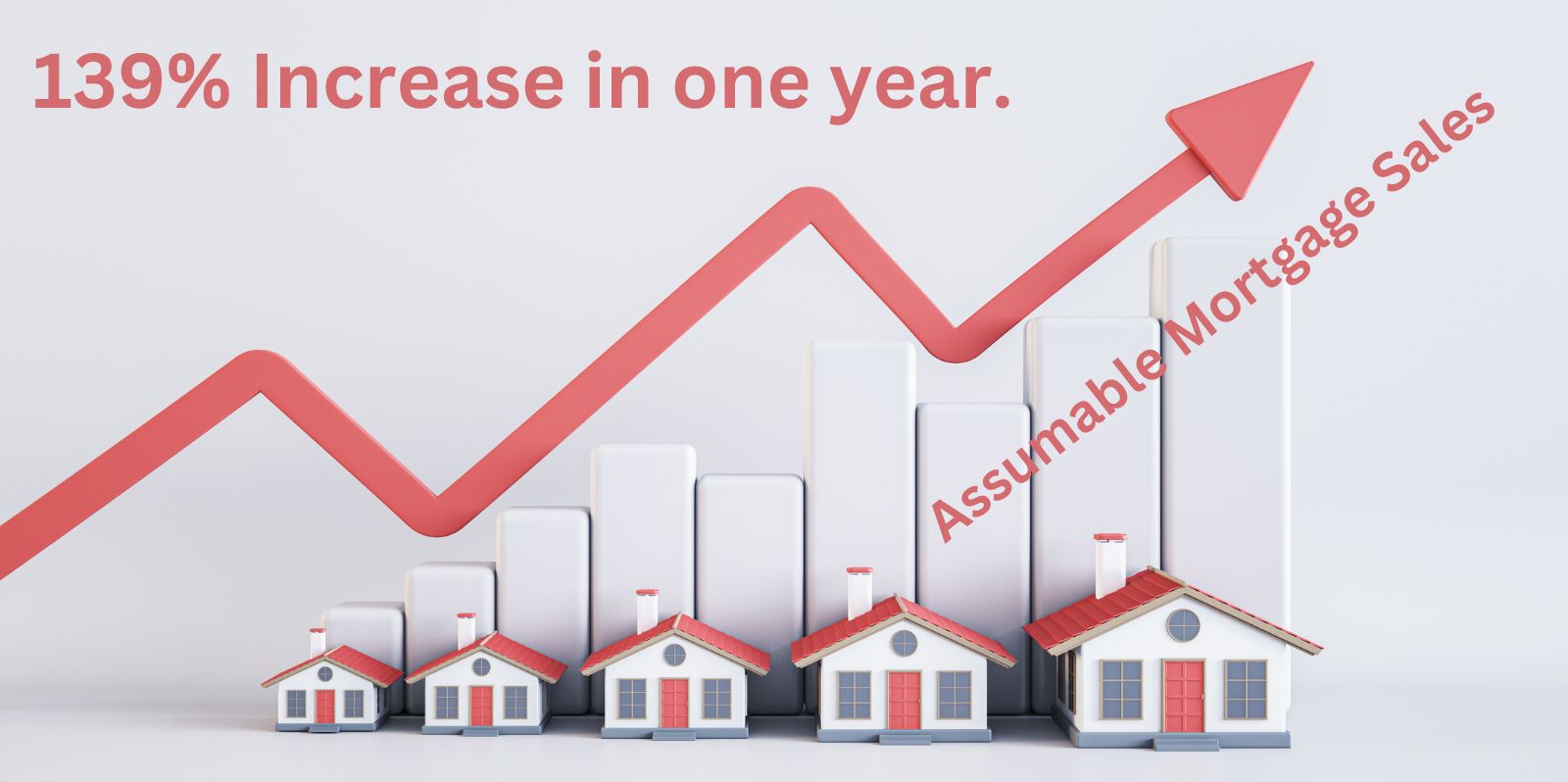The Future of Homeownership: Unlocking the Potential of Assumable Mortgages
By Elizabeth Lewis

In the ever-evolving landscape of real estate finance,
assumable mortgages stand as a beacon of hope for prospective homebuyers and sellers alike. These unique financial instruments offer a pathway to affordable homeownership, circumventing the volatility of interest rates and the complexities of securing new loans. This article delves into the intricacies of assumable mortgages, exploring their mechanics, benefits, and the practical steps to identify and secure properties with these advantageous loans.

Assumable mortgages are existing home loans that allow the buyer to take over the seller’s current mortgage, retaining the same terms, including the interest rate and repayment schedule.
What Are Assumable Mortgages?
Assumable mortgages are existing home loans that allow the buyer to take over the seller’s current mortgage, retaining the same terms, including the interest rate and repayment schedule. Unlike traditional mortgages, where the buyer must secure a new loan, assumable mortgages transfer the responsibility of the debt directly from the seller to the buyer.
This transfer can be particularly beneficial in a rising interest rate environment, as buyers can capitalize on the lower interest rates locked in by the original loan. Essentially, assumable mortgages offer a rare continuity in the financial aspect of homeownership, providing stability and predictability in an often unpredictable market.
How They Work
The process of assuming a mortgage is relatively straightforward but requires adherence to specific criteria and procedures set by the lender. Here’s a step-by-step breakdown of how assumable mortgages function:
- Qualification: The buyer must meet the lender’s creditworthiness and income requirements. This involves a thorough review of the buyer’s financial health, similar to applying for a new mortgage.
- Agreement: Both the buyer and the seller agree to the assumption terms, often documented in a formal agreement. This agreement stipulates the transfer of the mortgage, ensuring both parties understand their rights and obligations.
- Lender Approval: The lender must approve the mortgage assumption. This step is crucial, as the lender evaluates whether the buyer can uphold the loan’s terms. The lender’s approval may include a fee, which varies based on the loan and the lender’s policies.
- Transfer of Title: Once the lender approves, the title of the property is transferred to the buyer, who then takes over the mortgage payments. The buyer now legally assumes responsibility for the loan, maintaining the same interest rate and repayment schedule as the original mortgage.

FHA mortgages are assumable, as are all VA loans.
Locating Properties with Assumable Mortgages
Identifying properties with assumable mortgages requires a targeted approach, as not all loans are assumable. According to the Intercontinental Exchange, about 23%, or 12.2 million, active mortgages are assumable. However, the number of assumptions is a small portion of house sales. Here are effective strategies to find such properties:
- Real Estate Listings: Specific real estate websites and listings often highlight properties with assumable mortgages. Filtering search results to include terms like “assumable mortgage” can narrow down the options.
- Real Estate Agents: Engaging a knowledgeable real estate agent can significantly enhance your search. Agents have access to comprehensive databases and networks, enabling them to identify properties with assumable mortgages efficiently.
- Bank and Lender Inquiries: Contacting banks and mortgage lenders directly can also yield information on assumable mortgages. Lenders can provide lists of properties with such loans or guide you on how to find them.
- Networking: Leveraging personal and professional networks can uncover opportunities. Word-of-mouth referrals from friends, family, or colleagues can lead to discovering properties not widely advertised.
- Loan Type Awareness: All FHA mortgages are assumable, as are all VA loans. This makes properties financed through these programs prime candidates for those seeking assumable mortgages. Most conventional mortgages are not assumable, with exceptions for successors in interest who have the property transferred to them during someone’s lifetime or after their passing.
Applying for an Assumable Mortgage
The application process for an assumable mortgage mirrors that of a traditional loan but with a few key differences. Here’s a concise guide:
- Prepare Financial Documents: Gather all necessary financial documents, including tax returns, pay stubs, and credit reports. These documents will be essential for the lender’s assessment.
- Submit an Assumption Request: Work with the seller to submit a formal assumption request to the lender. This request initiates the process and outlines the buyer’s intent to assume the mortgage.
- Undergo Financial Evaluation: The lender will conduct a comprehensive financial evaluation to ensure the buyer meets the qualification criteria. This step includes verifying income, credit history, and overall financial stability.
- Pay Assumption Fees: Be prepared to pay any associated assumption fees. These fees can vary but are typically a small percentage of the loan balance.
- Complete Legal Documentation: Finalize all legal documentation required for the transfer of the mortgage. This includes signing assumption agreements and other necessary paperwork.
- Close the Transaction: Once all conditions are met, close the transaction. The title is transferred, and the buyer begins making mortgage payments under the existing terms.

In 2023, 6,000 assumable mortgage sales were completed, marking a 139% increase from 2022. In 2024, about 3,896 assumptions have already been completed, indicating a continued upward trend. Notably, about two-thirds of assumable mortgages with rates below 4% have been taken out in the last three years.
Trends and Challenges
The popularity of assumable mortgages is growing. In 2023, 6,000 assumable mortgage sales were completed, marking a 139% increase from 2022. In 2024, about 3,896 assumptions have already been completed, indicating a continued upward trend. Notably, about two-thirds of assumable mortgages with rates below 4% have been taken out in the last three years.
However, obtaining an assumable mortgage comes with challenges. Potential hurdles include the stringent qualification criteria set by lenders, assumption fees, and the complexity of finding properties with assumable loans. Despite these obstacles, the benefits of lower interest rates and stable mortgage terms make assumable mortgages an attractive option for many homebuyers.
Conclusion
Assumable mortgages present a compelling alternative in the realm of home financing, offering both buyers and sellers unique advantages. By understanding their mechanics and navigating the application process effectively, prospective homeowners can unlock the potential of these valuable financial tools. In an era where interest rates and housing markets fluctuate, assumable mortgages provide a stable and advantageous option, paving the way for a more secure future in homeownership.
By embracing the concept of assumable mortgages, we can foster a more accessible and equitable housing market, empowering individuals to achieve their dreams of homeownership with confidence and stability.


